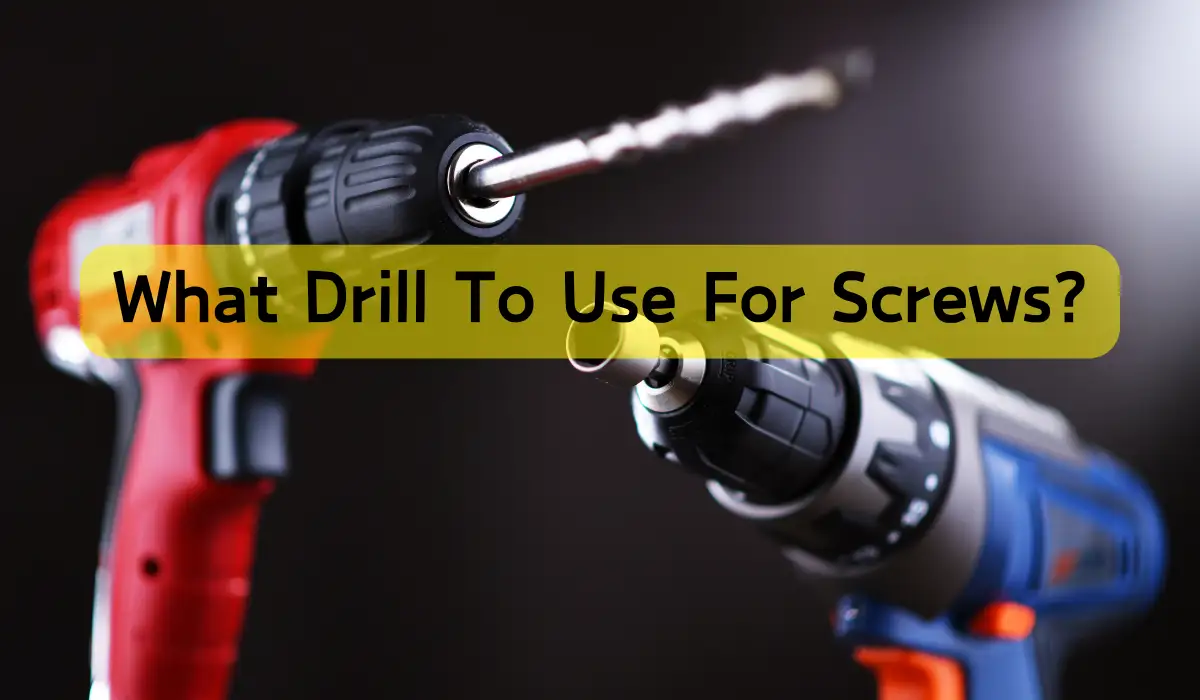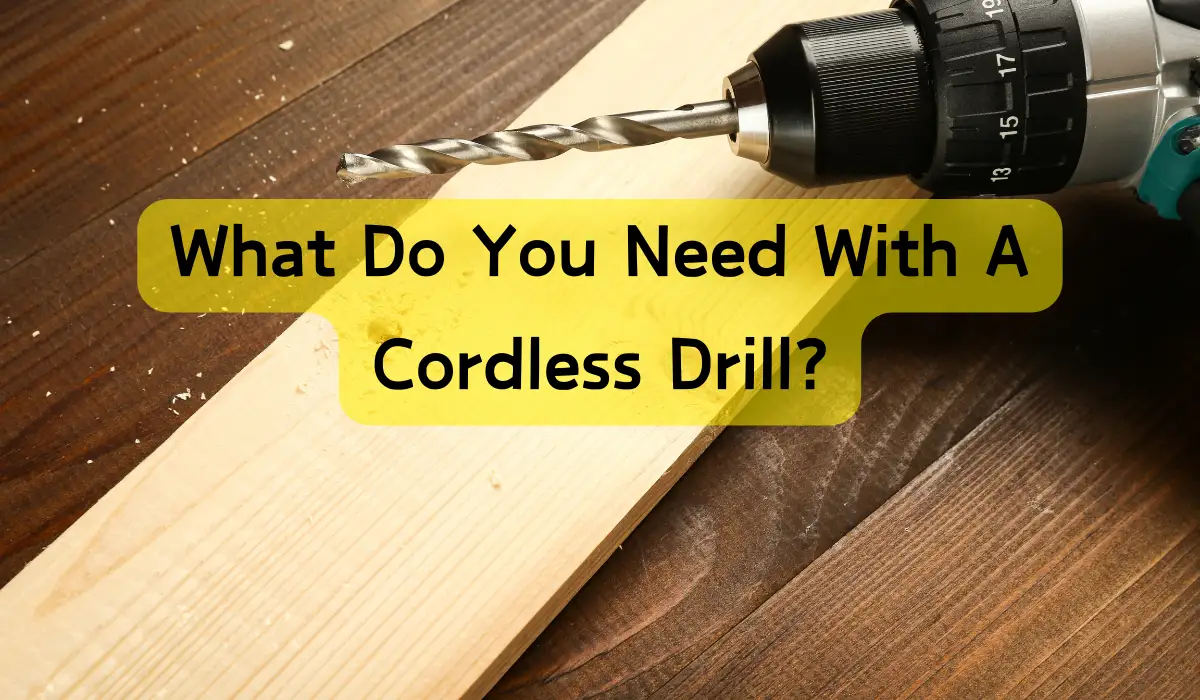You use your cordless drill for a variety of tasks, from drilling holes in different materials like wood, metal, and drywall, to driving screws and fasteners with precision and control. You can also mix and blend materials like concrete, mortar, or drywall compound, and power rotary sanding attachments to smooth out surfaces. Additionally, your cordless drill is perfect for precision tasks, such as tightening loose screws, bolts, and nuts without damaging them. With your drill, the possibilities are endless – and with the right attachments and bits, you’ll be able to tackle even more projects with ease and efficiency.
Jump to
Key Takeaways
• Cordless drills are versatile tools for drilling holes in various materials, including wood, metal, plastic, and drywall.
• They are powerful tools for driving screws and other fasteners with precision and control, making them ideal for construction and DIY projects.
• Cordless drills can be used for mixing and blending materials like concrete, mortar, or drywall compound with the right attachment.
• They can power rotary sanding attachments for smoothing out rough surfaces and achieving a flawless finish in woodworking and furniture restoration projects.
• Cordless drills provide precise control for tightening loose screws, bolts, and nuts without stripping or damaging them, making them essential for delicate or sensitive materials.
Drilling Holes in Various Materials
You can use your cordless drill to drill holes in various materials, from softwoods and hardwoods to metals, plastics, and drywall.
Whether you’re working on a woodworking project or hanging a picture, your cordless drill is up to the task. With the right drill bit, you can make precise holes in a variety of materials.
For example, you can use a twist bit for general-purpose drilling in wood, metal, and plastic. A step bit is ideal for drilling large holes in metal, while a spade bit is perfect for making holes in wood. If you need to drill into drywall, a masonry bit is the way to go.
When drilling into different materials, you must adjust your drill’s speed and pressure accordingly.
For instance, you’ll want to use a slower speed and more pressure when drilling into hardwoods, and a faster speed with less pressure when drilling into softwoods. By following these guidelines and using the correct drill bit, you’ll be able to make precise holes in a wide range of materials with your cordless drill.
Driving Screws and Other Fasteners
Beyond drilling holes, your cordless drill is also a powerful tool for driving screws and other fasteners with precision and control.
With the right bit or driver, you can tackle a wide range of fastening tasks, from assembling furniture to hanging shelves. Whether you’re working with wood, metal, or drywall, your cordless drill makes quick work of driving screws, nails, and other fasteners.
When driving screws, selecting the correct screwdriver bit or driver for the job guarantees a secure fit and prevents stripping or damaging the screw head.
For larger projects, consider using a drill with a high torque setting to tackle heavy-duty fastening tasks. Additionally, many cordless drills come with adjustable torque settings, allowing you to customize the drill’s power output to suit the specific fastening task at hand.
Mixing and Blending Materials
With the versatility of your cordless drill, you can seamlessly shift from driving screws to mixing and blending materials, taking your DIY projects to the next level.
This functionality is especially useful when working with materials like concrete, mortar, or drywall compound. By attaching a mixing paddle or bit to your drill, you can quickly and efficiently blend materials to the desired consistency.
This is particularly handy when working on large projects, as it saves you time and energy.
When mixing and blending materials, you must choose the right drill bit or attachment for the job.
A paddle bit, for instance, is ideal for mixing thick materials like concrete, while a mixing paddle is better suited for thinner materials like drywall compound.
By selecting the right tool, you can guarantee a smooth, consistent blend that meets your project’s requirements.
With your cordless drill, you can tackle a wide range of mixing and blending tasks with ease, making it an invaluable tool in your DIY arsenal.
Powering Rotary Sanding Attachments
As you move on to finer details in your project, your cordless drill can seamlessly power rotary sanding attachments to smooth out rough surfaces and achieve a flawless finish.
This attachment is ideal for sanding large, flat areas, such as tabletops or shelves. You can choose from various grits and abrasive materials to suit your project’s requirements.
When attaching the rotary sanding attachment to your cordless drill, make sure to follow the manufacturer’s instructions for secure and proper installation. Once attached, you can adjust the drill’s speed to match the sanding task at hand.
With the drill’s power and the attachment’s abrasive surface, you’ll be able to remove imperfections and achieve a smooth, even finish. This combination is particularly useful for woodworking, furniture restoration, and automotive projects.
Taming Tough Toenail Angles
You can tackle even the most challenging toenail angles with your cordless drill by employing specialized toenail clamps and bits that allow for precise control and navigation around tight spaces.
This enables you to access and work on hard-to-reach areas with ease, making your drilling tasks more efficient.
To get the most out of your cordless drill in these situations, consider the following tips:
Choose the right bit: Select a bit that’s specifically designed for toenail angles, as it will provide the necessary precision and control.
Use a steady hand: Maintain a firm grip on your drill and move slowly and deliberately to avoid mistakes.
Work in small increments: Divide your task into smaller sections, focusing on one area at a time to facilitate accuracy and avoid mistakes.
Assembling and Disassembling
Your cordless drill‘s versatility shines when it comes to assembling and disassembling projects, allowing you to tackle a wide range of tasks with ease, from building furniture to repairing machinery.
With the right drill bits and drivers, you can efficiently assemble and disassemble parts, making it an essential tool for any DIY enthusiast or professional.
Whether you’re building a bookshelf, repairing a bike, or fixing a leaky faucet, your cordless drill is up to the task.
When assembling, you can use your drill to drive screws, drill pilot holes, and mix materials like concrete or drywall compound.
When disassembling, you can use it to remove screws, bolts, and other fasteners with ease.
The convenience of cordless operation allows you to move freely around your workspace, making it easier to tackle complex projects.
Additionally, the adjustable torque setting on your drill guarantees you don’t strip screws or damage materials.
With a cordless drill, you’ll be able to complete projects faster and with greater precision, making it an indispensable tool in your toolkit.
Scraping and Removing Old Adhesives
One of the most underappreciated uses of a cordless drill is scraping and removing old adhesives, allowing you to efficiently strip away stubborn remnants of old glue, caulk, or tile adhesive.
With the right attachment, you can transform your drill into a powerful scraper, making quick work of even the toughest adhesives.
- Faster removal: A cordless drill can remove old adhesives much faster than manual scraping methods, saving you time and effort.
- Less physical strain: By using a drill, you can avoid the physical strain and fatigue associated with manual scraping, making it ideal for larger projects.
- Improved accuracy: With a drill, you can target specific areas with precision, reducing the risk of damaging surrounding surfaces.
Grinding and Polishing Surfaces
With the right grinding and polishing attachments, a cordless drill can be transformed into a versatile tool for smoothing out rough surfaces, removing rust and corrosion, and even polishing metal to a high shine.
You can use your cordless drill to grind down rough concrete, removing imperfections and leaving a smooth finish. You can also use it to remove rust and corrosion from metal surfaces, restoring them to their original condition.
When it comes to polishing, you can use your cordless drill to achieve a high-gloss finish on metal surfaces. This is especially useful for automotive and motorcycle enthusiasts who want to restore their vehicles to showroom condition.
You can also use your cordless drill to polish stone, glass, and other materials, giving them a professional-looking finish. With the right attachments, the possibilities are endless.
Tightening Loose Fittings and Parts
As you tackle various DIY projects, you’ll inevitably encounter loose fittings and parts that need to be tightened securely in place. Your cordless drill is the perfect tool for this task. With its powerful motor and precise control, you can easily tighten loose screws, bolts, and nuts without stripping or damaging them.
When tightening loose fittings and parts, it’s essential to consider the following:
Choose the correct drill bit: Select a drill bit that matches the screw or bolt head to ensure a secure grip and prevent damage.
Apply consistent pressure: Maintain a steady hand and apply consistent pressure to avoid stripping the screw or bolt head.
Monitor the torque: Be mindful of the drill’s torque setting to avoid overtightening, which can damage the surrounding material.
Frequently Asked Questions
Can Cordless Drills Be Used in Tight or Confined Spaces?
You can easily maneuver a cordless drill in tight spaces, thanks to its compact size and lightweight design, allowing you to drill or drive screws in confined areas with ease.
How Do I Properly Maintain and Store My Cordless Drill?
You’ll extend your cordless drill’s lifespan by regularly cleaning it, checking and replacing worn-out parts, and storing it in a dry place with the battery at 50% charge to prevent damage.
Are Cordless Drills Suitable for Heavy-Duty Construction Projects?
You’ll find that cordless drills are suitable for heavy-duty construction projects, but you’ll need to choose a high-torque model with a long-lasting battery, and be prepared to recharge frequently to keep your work flowing smoothly.
Can I Use a Cordless Drill With a Variety of Bit Sizes?
You can use a cordless drill with various bit sizes, thanks to its adjustable chuck that accommodates bits from 1/16 to 1/2 inches in diameter, making it versatile for different tasks and projects.
Do Cordless Drills Require Special Safety Precautions?
When working with cordless drills, you’ll want to take special precautions, like wearing safety glasses and a dust mask, keeping loose clothing tied back, and avoiding overreach or slippery surfaces to prevent accidents.




